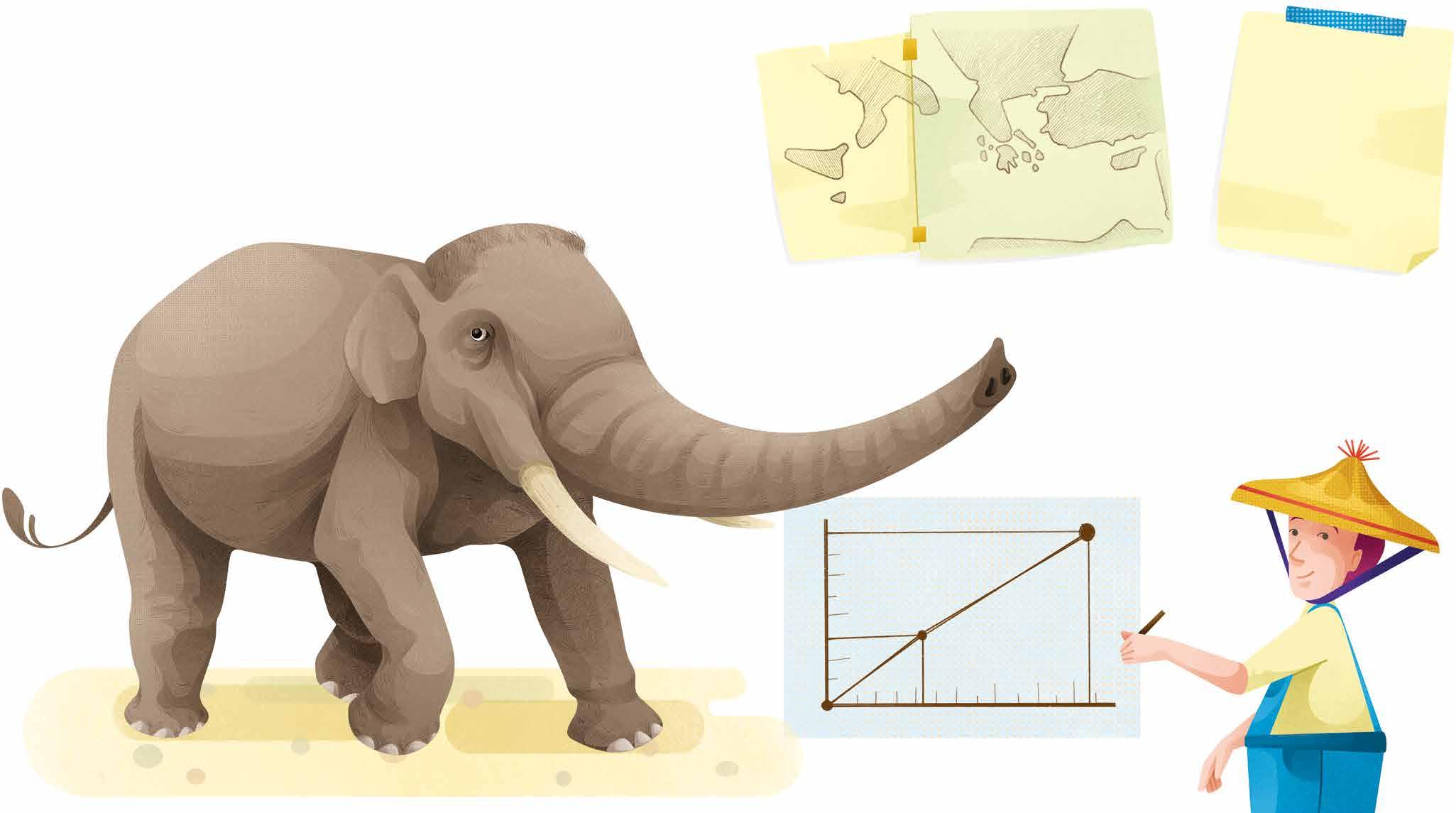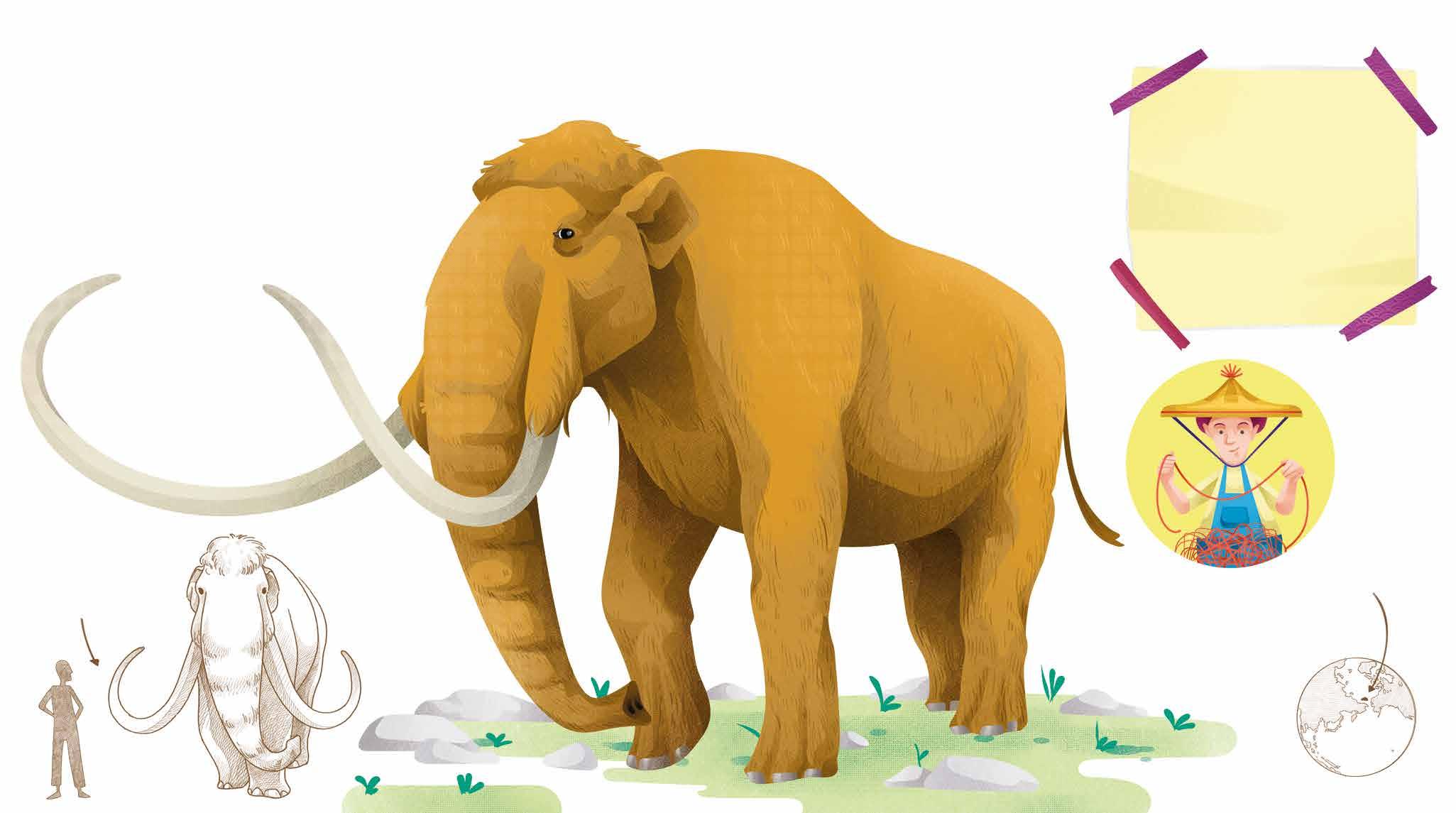


Platybelodon
Arsinoitherium
Brontotherium
Indricotherium
Elasmotherium
Gigantopithecus
Ceratogaulus
Leithia
Titanis
Giant penguin
Diprotodon
Megalodon




Platybelodon
Arsinoitherium
Brontotherium
Indricotherium
Elasmotherium
Gigantopithecus
Ceratogaulus
Leithia
Titanis
Giant penguin
Diprotodon
Megalodon

Over the years, a great number of fossilized bear bones have been discovered in many caves across Europe. These bears wandered the woods of mid-altitude mountains during the last glacial period. They were a lot bigger than today’s brown bears.
They probably lived in caves during the rigid winter season, when they fell into a deep sleep that lasted until they awakened in the spring. A number of bears could gather in each cave, and the females gave birth to their cubs there.
Studies of their fossilized teeth show that cave bears ate only plants—roots, leaves, berries and mushrooms—certainly all in great quantities if we consider how heavy they were!

SCIENTIFIC NAME: Ursus spelaeus
PERIOD: Quaternary
DIET: plants
HEIGHT: over 6.5 feet (2 m)
DISAPPEARED: about 24,000 years ago
CAUSES: climate change

This species of miniature elephant was widespread in the Mediterranean islands from Sicily to Malta and as far as Cyprus. Its lifestyle was much like that of its close relative, today’s Asian elephant.
Its blade-shaped molars, typical of all elephants, were useful for grinding leaves and grass. Females were smaller than males, and they had just a hint of tusks, if they had them at all.
IT WAS WIDESPREAD IN THE MEDITERRANEAN ISLANDS.

SCIENTIFIC NAME: Palaeoloxodonfalconeri
PERIOD: Quaternary DIET: plantsandfruit
LENGTH: 5feet(1.5m)
HEIGHT: 3feet(90cm)
DISAPPEARED: 70,000yearsago
CAUSES: climatechange
Dwarfism seems to have been a form of adaptation to its environment. Often, food on an island is limited and life can be easier for smaller sized animals, which require smaller amounts of food.
Woolly mammoths were about the size of an elephant. They had a double layer of fur to protect themselves from the cold of the frozen steppes of Asia, Europe and North America, their natural habitats.

Compared to present-day elephants, their ears and tail were smaller, while the males’ curved tusks were truly impressive, reaching a length of more than 15 feet (4.5 m) in some cases. THEIR TUSKS
A GROWN MAN LOOKS QUITE SMALL WHEN COMPARED TO A MAMMOTH!
As with elephants, the females probably gave birth to only one calf after a gestation period of a year. The calf stayed by the mother’s side for a long time, enjoying the protection of the entire herd.

SCIENTIFIC NAME: Mammuthusprimigenius
PERIOD: Quaternary
DIET: grassandleaves
LENGTH: 13feet(4m)
HEIGHT: 11.5feet(3.5m) at the shoulder
DISAPPEARED: 5,000 years ago
CAUSES: climatechange ITS FUR COULD BE UP TO 3 FEET (90 CM) LONG!
WHEN MAINLAND MAMMOTHS WERE ALREADY EXTINCT, 300 SPECIMENS SURVIVED HERE, ON WRANGEL ISLAND.
The Hyaenodon was one of the biggest, fiercest predators of its time, and when it attacked, its prey had little hope of escaping. It used its enormous mouth to seize its prey by the head and puncture its skull.

SCIENTIFIC NAME: Hyaenodon gigas
PERIOD: Quaternary
DIET: meat
LENGTH: 10 feet (3 m)
HEIGHT: 5 feet (1.5 m) at the withers
Disappeared: 20 million years ago
CAUSES: competition from other predators
Considering its massive size, we can probably assume that the Hyaenodon was not a very able runner. It probably preferred to use stealth for hunting, waiting for its prey (sometimes of considerable size) to come close, then jumping on its back, tackling it to the ground and killing it.

Elephants have ancient relatives that had some strange and unusual looking tusks. They used their tusks to obtain food, digging in the dirt, snapping branches and stripping bark from trees. These tusks may have also been used to attract females during the courting ritual.
The Deinotherium looked like a very big elephant. Its distinguishing feature was its two large tusks, which, unlike those of other animals with trunks that we know, grew out of its lower jaw and pointed downwards. In older individuals, the tusks could reach a length of 3.3 feet (1 m).

SCIENTIFIC NAME: Deinotherium giganteum
PERIOD: Middle Miocene to Pleistocene
DIET: plants
LENGTH: 23 feet (7 m)
HEIGHT: up to 15 feet (4.5 m)
DISAPPEARED: 1 million years ago
CAUSES: climate change
THE DEINOTHERIUM LOOKED LIKE AN ELEPHANT BUT IT WAS CONSIDERABLY LARGER!
Tusks were also a distinguishing feature for the Platybelodon. The upper tusks were small and sharp, and the lower ones were broad and flat, like shovels.

SCIENTIFIC NAME:
Platybelodon grangeri
PERIOD: Cenozoic
DIET: plants
LENGTH: 23 feet (7 m)
HEIGHT: 8 feet (2.5 m)
DISAPPEARED:
4 million years ago
CAUSES: climate change
IT PROBABLY USED ITS LOWER TUSKS TO KNOCK DOWN THE SMALL TREES THAT IT ATE OR TO OBTAIN LARGE AMOUNTS OF AQUATIC PLANTS.
The Titanis was taller than a human. It was unable to fly, but with its powerful back legs, it could run through the American prairies at a speed of around 40 miles per hour (65 km/h).

SCIENTIFIC NAME:
Titanis walleri
PERIOD: Cenozoic
DIET: meat
HEIGHT: 8feet(2.5m)
DISAPPEARED:
1.8millionyearsago
CAUSES: climatechange
It should be no surprise that it was known as a “terror bird.”
It was a voracious carnivore ready to use its hatchet-shaped beak to tear any animal that crossed its path to shreds. It seized its prey and killed it by slamming it repeatedly to the ground, and then it swallowed it whole or tore it to pieces if it was too big.

SCIENTIFIC NAME: Kumimanu biceae
PERIOD: Cenozoic
DIET: fish
HEIGHT: 6 feet (1.8 m)
DISAPPEARED: 56 million years ago
CAUSES: competition with marine mammals
Giant penguins were similar to today’s penguins except that they were bigger and had a considerably longer beak. They swam in the seas of the Southern Hemisphere, eating great quantities of fish. Since they were bigger than today’s penguins, they could dive deeper, but like them, giant penguins built their nests on the coast and took care of their young until they were fully grown.
DIVING DEPTHS

Its enormous size makes it the biggest fish that ever existed. It looked like a great white shark but it was over three times as long. Apparently, however, the two are not related.
It inhabited seas all over the world but it favored warmer waters. Young individuals wandered the waters near the coast, while adults preferred the deeper waters of the open sea.
Its mouth had a number of rows of big, sharp teeth that were about 9 inches (23 cm) long. When it was open, its mouth was about 10 feet (3 m) wide. With its powerful bite, it could devour whales and other large marine animals after ambushing them from the depths of the sea.

SCIENTIFIC NAME: Carcharodonmegalodon
PERIOD: Cenozoic
DIET: meat and fish
LENGTH: 65.6 feet (20m)
DISAPPEARED: 52millionyearsago CAUSES: climatechange
A freshwater dolphin used to live in the Yangtze River in China.

It was grey on its dorsal side and white on its ventral side. It had tiny eyes and a long, narrow upturned beak.
ITS EXTINCTION WAS CAUSED BY THE INTENSE USE OF THE RIVER FOR TRANSPORTATION AND FISHING, THE RADICAL TRANSFORMATION OF ITS HABITAT DUE TO POLLUTION AND THE CONSTRUCTION OF DAMS AND HYDROELECTRIC POWER PLANTS.
SCIENTIFIC NAME: Lipotesvexillifer
PERIOD: Quaternary
DIET: fish
LENGTH: 8 feet (2.5 m)
DISAPPEARED: declared extinct in 2006
CAUSES: destruction of its habitat

The Javan tiger was a subspecies of tiger that lived only on the Indonesian island that gave it its name—Java. It was hunted and killed by an everincreasing local population, and its habitat was destroyed to make way for rice fields, teak trees and coffee plantations.
HUMANS DEPRIVED IT OF ITS FAVORITE PREY, DEER AND WILD BOAR, AND EVENTUALLY IT LACKED SUFFICIENT RESOURCES TO SURVIVE.

SCIENTIFIC NAME: Pantheratigrissondaica
PERIOD: Quaternary
DIET: meat
LENGTH: 8feet(2.5m)
DISAPPEARED: declaredextinctin1979
CAUSES: huntingandthedestruction of its habitat
THE ISLAND OF JAVA
The warrah, also known as the Falkland Islands wolf, was a small wolf and the only predator in the Falkland Islands in the southern Atlantic. It was the size of a fox and had a bushy brown tail with a white tip.

WHEN HUMANS ARRIVED ON THE ISLANDS, THEY BROUGHT THEIR FLOCKS, AND IN ORDER TO PROTECT THEM, THEY GOT RID OF THESE POTENTIAL PREDATORS, POISONING THEM AND EXTERMINATING ALL OF THEIR PACKS.
SCIENTIFIC NAME: Dusicyon australis
PERIOD: Quaternary
DIET: meat, insects and mollusks
LENGTH: 3.3 feet (1 m)
HEIGHT: 15 inches (38 cm)
DISAPPEARED: 1876
CAUSES: hunting